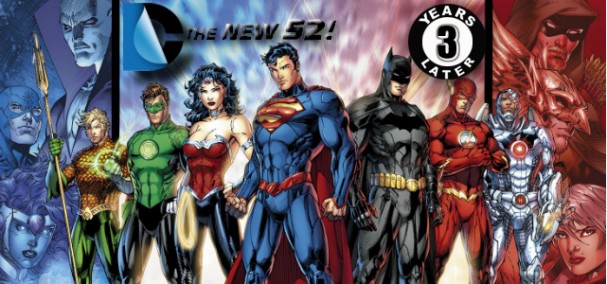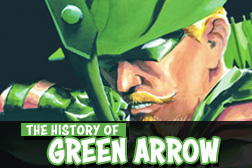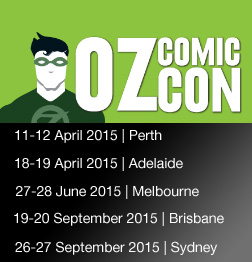The New 52 has had its share of detractors over the last few years, but we’re basically enthusiasts here at Behind the Panels. So rather than tackle one of those annual “New 52: Wins and Losses So Far” columns, we thought we’d celebrate what we’ve enjoyed so far. After enough, there’s enough dark holes on the Interwebs to vent one’s spleen into, and we’re just little Pollyannas when it comes to comics. So this is us appreciating what DC has done for us so far, and what we hope to see in the future.
Flash: He’ll save every one of us
A crisis by any other name, the 5-part Flashpoint mini-series and satellite books debuted in May 2011 and would change the course of the entire DC Universe.
The series, written by Geoff Johns and gorgeously illustrated by Andy Kubert, saw The Flash wake up to a world vastly changed, and only he knew anything was different. It eventuated that the timelines had been altered, and only speedster could correct history, but not without significant costs. From a publication point of view, the series ended with The Flash choosing between three distinct publisher’s timelines: DC (New Earth), Vertigo (Earth-13), and WildStorm (Earth-50).What emerged on the other side was a combination of all three, as DC relaunched their entire line, just as they had done in the 1980s. It would be called The New 52.
On the 31 May 2011, DC Comics made the announcement that they would “launch a historic renumbering of the entire DC Universe line of comic books with 52 first issues”
Revived interest in comics
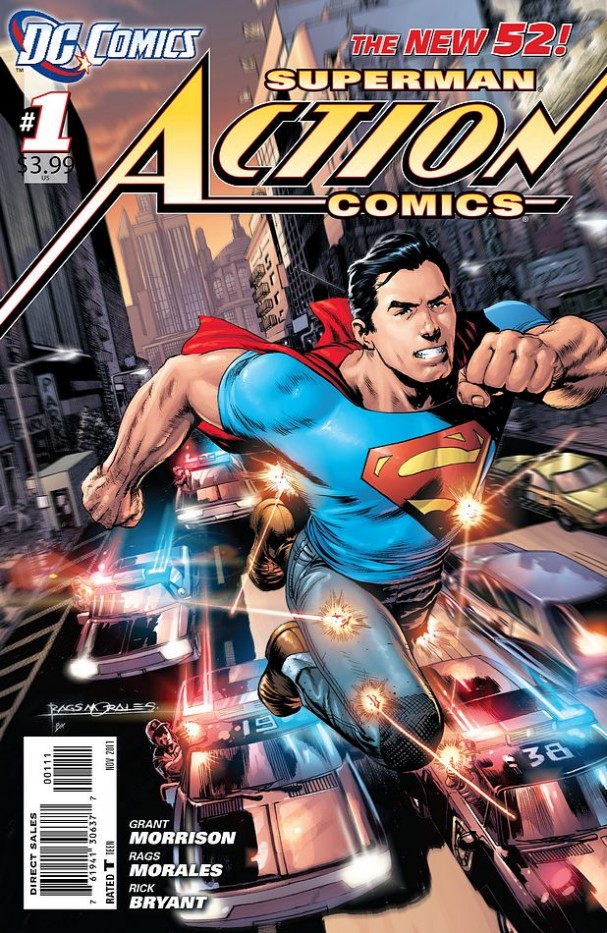 In many ways, our comic book show and subsequent site began with the New 52. Like many readers, the chance to jump on from the beginning with every single DC title just too big an opportunity to pass up.
In many ways, our comic book show and subsequent site began with the New 52. Like many readers, the chance to jump on from the beginning with every single DC title just too big an opportunity to pass up.
It was an immediate success, with 17 of the Top 20 books of the month (as reported by Diamond Comic Distributors) DC Comics New 52 titles, along with 16 of the Top 20 for 2011. After all, why not? With no burdensome continuity or intimidating numbering (Action Comics and Detective Comics were up to #904 and #881 respective at the end of their run), anybody could walk into a store and be confident in buying a #1 issue that made sense that month. The stories were a mixture of new takes on old characters, some maintenance of continuity in the Batman and Green Lantern families of books, along with some curious choices in the less-than-famous Voodoo, I…Vampire and Resurrection Man.
This was a Justice League that had yet to form and become super friends. Superman was a t-shirt wearing vigilante that Metropolis hadn’t learned to trust yet. Batman was an urban legend in some circles. Were these our characters or not? It was a headline-grabbing event that was frankly exciting because we didn’t know what would happen next. It was a puzzle to be solved, not least of which was the one around the mysterious woman in red, someone who would appear in every single issue #1 of the month. (She later turned out to be Pandora, a figure who would be given her own series
Day and Date Digital Comics
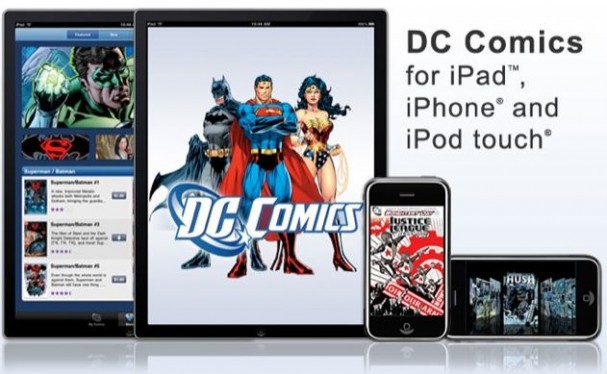 Three years on, we are taking day-and-date digital comics for granted. Yet it was the other significant announcement made in May 2011. Digital comics weren’t new at the dawn of the New 52, but being able to purchase them directly from your tablet or mobile on the same day of release was a new one for DC.
Three years on, we are taking day-and-date digital comics for granted. Yet it was the other significant announcement made in May 2011. Digital comics weren’t new at the dawn of the New 52, but being able to purchase them directly from your tablet or mobile on the same day of release was a new one for DC.
On the technology side, reading comics on a tablet has been a joy, and increasingly enhanced over the last few years. Retina and hi-res tablet screens have made even the most dedicated of print fans pay attention to the detail of the colour replication, and newer technological developments such as DC2 and DC Multiverse, along with direct-to-digital titles such as Batman ’66, Injustice: Gods Among Us and linking comics to the Arrow and The Flash TV series.
Yet the bottom line is the bottom line, and digital sales have increased steadily over the last 3 years. Overall, the market has been strong for all companies. Indeed, 2011 saw a 213% rise in digital sales to $25 million (up from $7 million in 2010), and rose a further 180% to $70 million in 2012. In July 2014, ICv2 reported that the 2013 North American digital comics sales alone totalled $90 million, up 29% on the previous year. It’s a relatively small figure when compared to the $517.66 million worth of print sales reported by Diamond last year, but it is indicative of the changes the last 3 years has seen to the market.
Creative creators
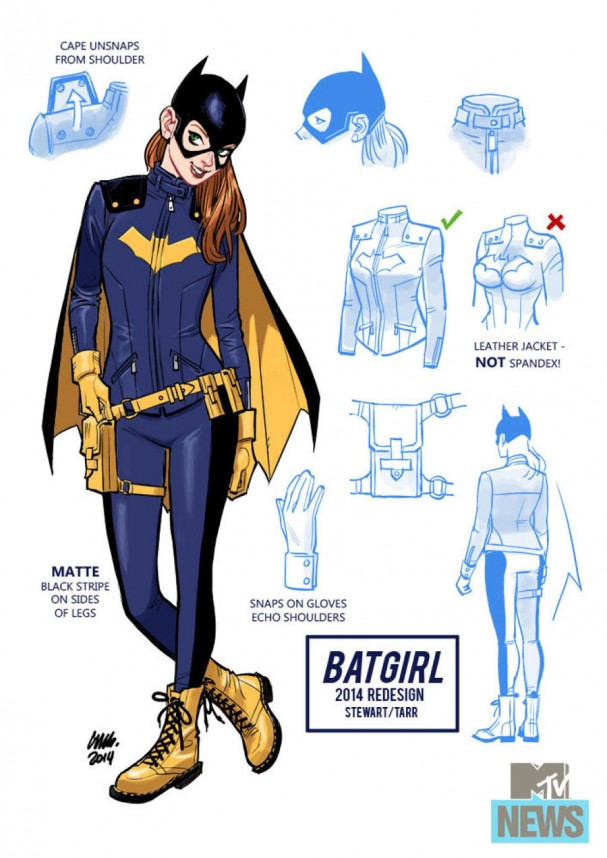 It started as a massive win for DC Comics. The creative choices on the New 52 were often inspired. Who better that to relaunch Action Comics than Superman superfan and aficionado Grant Morrison? Geoff Johns could do little wrong in the eyes of fans, and he was leading up Justice League, Green Lantern and Aquaman. Jeff Lemire was writing not just Animal Man but Frankenstein, Agent of S.H.A.D.E. as well. Gail Simone was on Batgirl, a perfect fit if ever there was one. J. H. Williams III’s groundbreaking art graced Batwoman month after month, elevating the character to high art.
It started as a massive win for DC Comics. The creative choices on the New 52 were often inspired. Who better that to relaunch Action Comics than Superman superfan and aficionado Grant Morrison? Geoff Johns could do little wrong in the eyes of fans, and he was leading up Justice League, Green Lantern and Aquaman. Jeff Lemire was writing not just Animal Man but Frankenstein, Agent of S.H.A.D.E. as well. Gail Simone was on Batgirl, a perfect fit if ever there was one. J. H. Williams III’s groundbreaking art graced Batwoman month after month, elevating the character to high art.
Yet the ideal was no without its cracks. While no creators can be expected to stay on a book for 3 years, and indeed the currency and freshness of comics depends on new voices, DC took its hits with several high-profile walkouts. George Pérez was incredibly frank about his early problems with Superman, and Gail Simone was bizarrely fired (and then re-hired 2 weeks later) from the best-selling Batgirl in 2012. In 2013, J.H. Williams III left Batwoman, a character he helped co-create, citing “editorial decisions” as a reason.
Even with these muddy marks across the history of the New 52, DC continues to make some interesting creative decisions on new and continuing titles. Just this year, they snagged the amazing team of Geoff Johns and artists John Romita Jr. and Klaus Janson for Superman, a book that needed a firm shot in the arm. 1980s/90s parody character Lobo was given a more urbane makeover by Marguerite Bennett. Husband and wife team Meredith and David Finch take over Catwoman in November 2014. Batgirl spun off in October 2014 in an entirely different direction, with writers Cameron Stewart and Brendan Fletcher and artist Babs Tarr taking over. It shifted the tone of the book, and some might say the direction of the DCU, in an entirely lighter and younger direction.
Indeed, DC have only just begun to get creative.
Getting experimental: fresh takes and extending the fan base
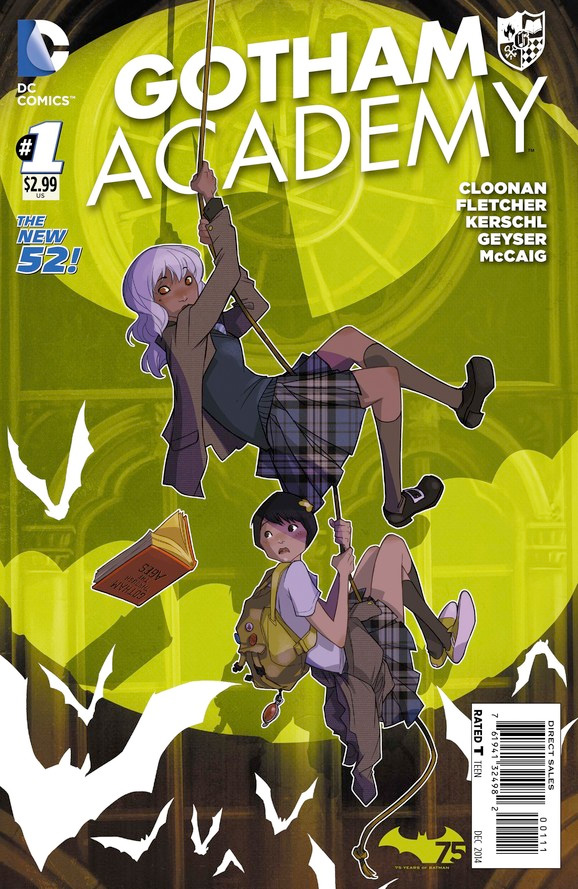 2014 has been a red-letter year for new titles in the DCU. Weekly titles like Batman Eternal and The New 52: Futures End have fleshed out areas of the DCU that the monthly titles have yet to tackle in their substantive stories. Infinity Man & the Forever People saw the return of the New Gods.
2014 has been a red-letter year for new titles in the DCU. Weekly titles like Batman Eternal and The New 52: Futures End have fleshed out areas of the DCU that the monthly titles have yet to tackle in their substantive stories. Infinity Man & the Forever People saw the return of the New Gods.
Yet the titles that have really begun to grab our attention are the ones that are doing things that have never been done before at DC, ones that push the entire story forward and into brave new areas. Grayson is a great example of a book that spun out of an event (Forever Evil), and continued the progression of a character than begun as Robin, graduated to Nightwing and eventually just became a Winter Soldier-esque spy for DCU. It’s one of the first great examples of the New 52 taking a character we know and turning him on his head.
Similarly, a trio of books that have been released (or are about to be released in the back half of the year open up corners of the Batman universe that a dozen books around the Dark Knight had failed to cover. The best of these so far is undoubtedly Gotham Academy, set in the titular city’s prestigious prep-school. Aimed at more of a teen marker, writers Becky Cloonan and Brendan Fletcher have managed to plug into the core triggers that make teen drama fun, never burdening the tale with didactic lessons or needless exposition. With its gorgeous anime-inspired art from Karl Kerschl, and sense of adventure, this should be the benchmark for all future DC releases.
As Arkham Manor and Gotham By Midnight get set to join it, along with outsider books like Klarion The Witch Boy, DC are taking chances again, rather than simply playing it straight down the line with more Batman and Superman books. Titles like Gotham Academy hope to open the appeal of comics up to a wider, and more importantly younger, audience. Tie-ins with Arrow and The Flash similarly
Future Changes and women in red
As with all things, the future is uncertain. DC’s Futures End sounds conclusive, and setting the titles 5 years into the future would apparently give us some idea of how it all turns out. Yet with Grant Morrison’s universe bending The Multiversity floating about, and various hints in Superman: Doomed and Justice League 3000 that the pre-New 52 universe is still out there somewhere. It leaves us wondering what next?
With over 28 cancelled titles under their belt, the New 52 began as a way to get new readers into comics without the burden of continuity. Will DC take the opportunity to wipe the floor with its universe again in 2015? Will we end up with a hybrid of the New 52 and the old-school universes? Will the status quo be maintained? Or will we get something entirely new? Time will tell if the Newish 40-ish or so will survive, or we will start the cycle anew. Either way, it’s kind of an exciting time to be reading comics.
Agree or disagree? Got a comment? Start a conversation below, or take it with you on Behind the Panel’s Facebook and Twitter!
If you are an iTunes user, subscribe to our weekly podcast free here and please leave us feedback. That’s how we get more attention on the Interwebs!

